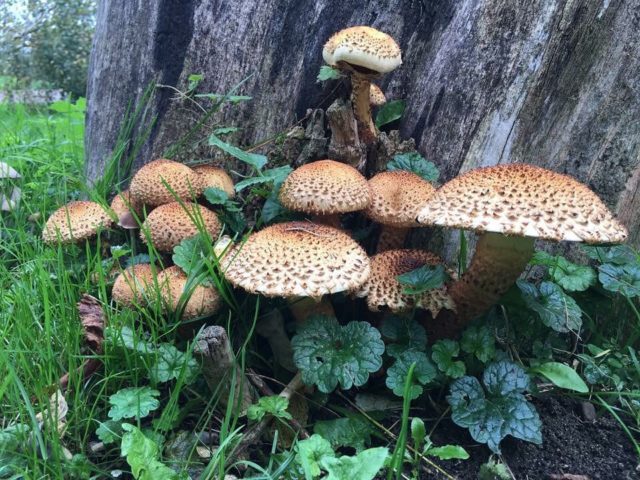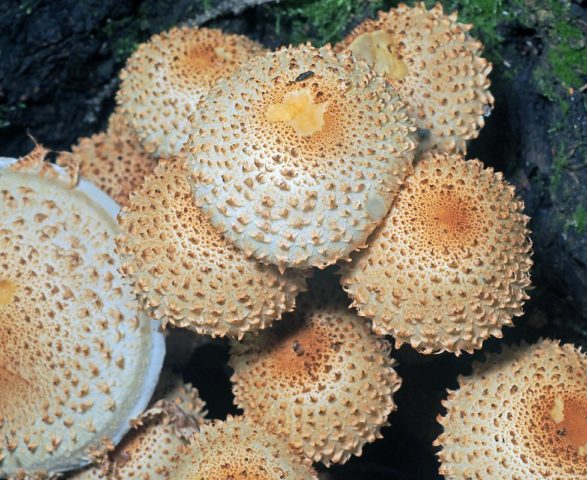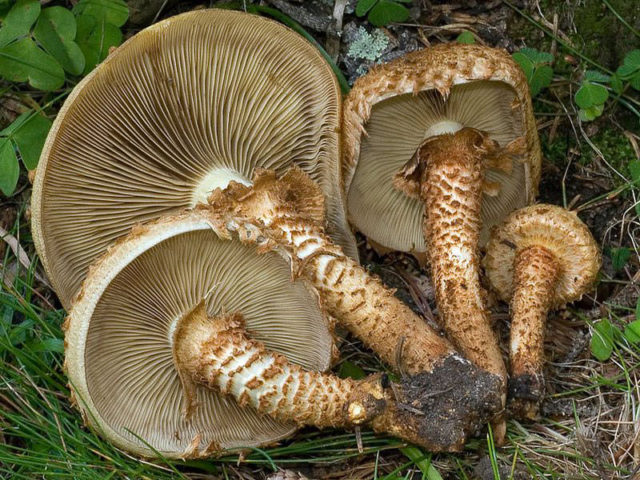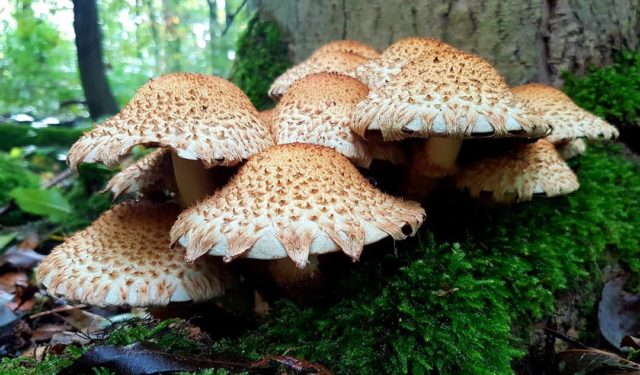Content
Lamellar fungi are considered more common than spongy fungi and have several hundred different species. Scaly scales have a rather unusual cap shape and attracts mushroom pickers with their bright appearance. Unlike other representatives of this genus, it is distinguished by the absence of a clear garlic smell.
What does scaly scales look like?
Scaly scales have a light color. The caps are covered with dense scales with darker dense scales. The flesh is quite firm and white in color. The smell is weak, the mushroom taste is practically absent. The spore powder has a brownish tint.
The peculiarity of this species is the peculiarity of the development of the plates. They pass the period of the greenish color of the plates, becoming immediately brown. The plates are narrow and frequent, adherent and weakly descending. At a young age, they are often covered with a transparent white film.
Description of the hat
The size of the cap of adult saprophytes varies from 3 to 11 cm. Its shape is either domed or broadly convex. Over time, a dense tubercle forms in the center. In young flakes, the cap bends down, forming a kind of dome. Its edges are cut and resemble a fringe at the fabric.
The surface of the scaly scales is dotted with dense scales. Their color can range from brownish to brownish. The light surface between the scales is rather sticky. Depending on the growing conditions, the mushroom may have a slightly yellowish tint.
Leg description
The scaly leg can reach up to 10 cm in height with a diameter of about 1.5 cm. It has a dense dry structure and is covered with scales in the form of annular growths. The greatest number of outgrowths is found closer to the lower part of the stem, while its upper part is practically smooth.
The color of the growths on the stem most often repeats the shade of the cap scales. They usually have ocher brown tones. However, sometimes, depending on the growing conditions, the color of such growths can have reddish and brown shades closer to the base of the mushroom.
Is the mushroom edible or not
Like other members of its genus, the scaly one is completely edible. Unlike its relative, ordinary flake, it has practically no foreign smell. At the same time, the pulp does not taste bitter and is excellent for cooking.
There are several ways to prepare these saprophytes. The traditional method is frying and preparing main courses. In addition, flakes are excellent for pickling and pickling.
Where and how it grows
Saprophyte is very common in the northern hemisphere. It can be found in Europe, Asia and parts of North America.Most often, flakes grow in groups on tree trunks. Solitary specimens are quite rare. Among the trees on which this saprophyte grows are:
- beech;
- Birch tree;
- aspen;
- maple;
- willow;
- Rowan;
- oak;
- alder.
In Russia, the scaly mushroom is represented in the entire middle zone, as well as in areas of temperate deciduous forests. Among the regions where it will not work out, the Arctic, northern European regions, as well as southern regions - Krasnodar and Stavropol Territories, as well as all the republics of the North Caucasus are distinguished.
Doubles and their differences
The appearance of the scale may suggest that it is inedible or even poisonous. It resembles many tubular mushrooms, the appearance of which should traditionally scare away inexperienced mushroom pickers. However, its dark scales are the hallmark that distinguishes the mushroom from many others.
The only representative of the mushroom kingdom with which the scaly kingdom can be confused is the common scaly. Adults are almost identical to each other. Both mushrooms are edible, the only difference being the difference in smell and slight bitterness in taste.
Conclusion
Scaly scales are widespread in mid-latitudes. Distinctive features of the appearance do not allow it to be confused with other representatives of the mushroom kingdom. Being edible, it is widely used in cooking.












